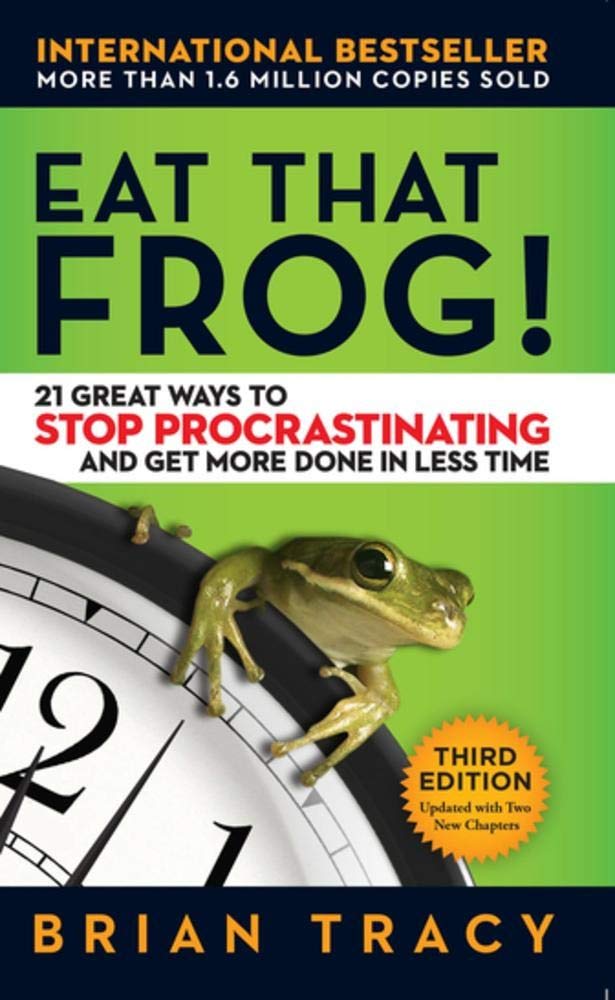
By Tracy Brian
There just isn't enough time for everything on our to-do list?and there never will be. Successful people don't try to do everything. They learn to focus on the most important tasks and make sure those get done. They eat their frogs.There's an old saying that if the first thing you do each morning is eat a live frog, you'll have the satisfaction of knowing you're done with the worst thing you'll have to do all day. For Tracy, eating a frog is a metaphor for tackling your most challenging task?but also the one that can have
Reviewed by Rushikesh Malve, B. E. Computer Student, R H Sapat College of Engineering Management Studies & Research
As a student, I find myself often failing to manage time and deal with the mountain of tasks. Whether it is doing assignments, preparing for exams, or squeezing in some personal time, it always feels like there aren’t enough hours in a day. I had hoped that Brian Tracy’s book, Eat That Frog! would provide practical solutions and, indeed, it did not disappoint.
The title intrigued me right away. The “frog” in the book is a metaphor for your most challenging task—the one you’re most likely to avoid but is also the most important. Tracy’s simple yet impactful idea is to tackle that “frog” first thing in the day when your energy is highest. This approach is so relatable for students who procrastinate over dreaded tasks, like studying for a tough subject or working on a group project.
This is one really short book—well-suited to the patience level of an individual who isn’t in a mood to sit down for lengthy theoretical reads. The author delivers 21 hands-on, workable steps for eliminating procrastination and improving productivity. The simple, practical steps helped a chronic procrastinator who likes scrolling on social media and failing to finish homework; such was I with this read.
One of the lessons that really stuck in my head was the “80/20 Rule,” which states that 20% of your tasks produce 80% of your results. For students, this means identifying the most critical tasks, like preparing for an important test or writing a major essay and focusing on them first instead of wasting time on less significant activities.
Another game-changer was the “10/90 Rule,” which really emphasizes planning. Tracy says that spending just 10% of your time organizing and prioritizing can save you 90% of the effort later. I applied this to my study routine by making a simple to-do list each morning, and it actually helped me stay on track.
What I loved most about the book is that it just faces procrastination head-on. Tracy doesn’t tell you to “stop being lazy.” Instead, he explains why we procrastinate and how we can break the habit step by step. For example, he suggests breaking big tasks into smaller chunks to make them feel less overwhelming-a technique that has been a lifesaver for me when tackling long research papers.
The book also talks about discipline and consistency. Tracy’s advice to “single handle every task” really struck a chord. It means to start a task and see it through to its completion, which is refreshing in a world of distractions.
As a student, I sometimes found the examples in the book more suited to working professionals. However, the core lessons are universal and can be adapted to fit any lifestyle. Whether you are a student trying to balance studies and extracurriculars or a working adult juggling deadline, this book has something valuable to offer.
In conclusion, Eat That Frog! is a practical guide to beating procrastination and making the most of your time. It’s not overly preachy or theoretical, which makes it easy to follow. If you’re someone who struggles with managing time or staying productive, this book is worth a read. It’s simple, relatable, and filled with actionable tips that can genuinely make a difference in your daily life.
The book leaves you with a powerful call to action: “Get more of your important tasks done—today!”
